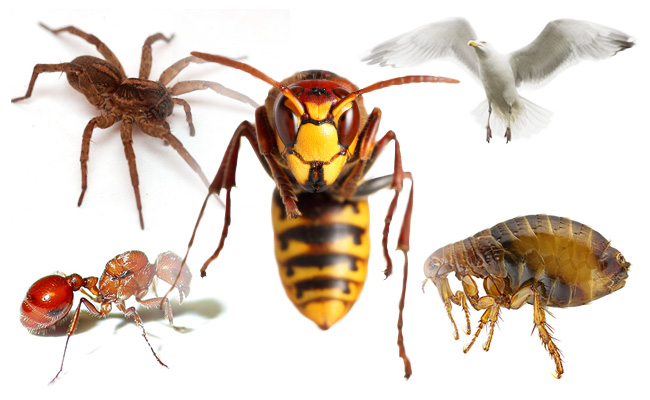Summer Pests - What To Look Out For

As the warmer months continue to raise the temperature around the country, its not only the humans who become more active. The milder weather and kinder conditions are ideal for all manner of pests, many of which are very problematic for the homeowner or tenant. Infestations of some unwanted guests are particularly common in the summer, and it is very important to try to identify a problem as soon as possible and to take appropriate action in order to minimise the damage caused. Of course, it is not always possible to prevent a small number of insects or other vermin entering a property, but these isolated incidents are not the focus here. Instead, here is a look at the species of vermin which are most likely to invade the home in serious numbers at this time of year.
Ants
Warmer weather is ideal for insects, as it helps to invigorate them and bring them out of the dormancy of winter into a flurry of activity. Ants in particular are an enormous problem. In the United States of America and in Canada, ants are generally the number one pest animal causing problems in the home. Though they might not carry communicable diseases or spread infection in the same way as larger animals, they can cause severe disruption and are very unpleasant in food-preparation areas. Ants are attracted to the food residues commonly found in kitchens, where they manage to enter the small spaces around cupboard doors to make their homes in hidden corners. The sugary substances popular in the warm summer months are particularly appealing to the ant. Carpenter ants are even more of a serious issue, causing structural weakening of wooden structures such as decking areas or porches. If individual ants are spotted within the home, or a nest is discovered, take action immediately to prevent further issues.
Bees And Wasps
In the later summer months, bees and wasps are another problem and they cause substantial disruption. Bees and wasps are likely to construct their hives close to outdoor leisure areas, which is problematic as disturbances can cause the insects to swarm. Wall cavities and roof voids are also popular locations for a nest. And unfortunately for humans, wasp colonies move every single year. A wasp nest left to grow can contain up to ten thousand wasps. If wasps or bees are spotted entering a single access point, whether in the walls, in a tree or an enclosed outbuilding, this is the earliest sign of the hive developing.
Spiders
Although in the garden the spider is a great friend, when the home becomes infested there can be cause for alarm and unhappiness. According to research, it is the male spiders who tend to wander during the summer breeding season. The spiders are attracted into the warm and enclosed spaces offered by houses, whose windows are opened further during these months. The arrival of male spiders into the home leads to the fertilisation of thousands of eggs, which hatch to infest the house. Spiders are also likely to come into the home at the end of summer, when falling temperatures start to cause them to look for shelter and respite from the cold. Rigorous cleaning, including using the vacuum cleaner to remove any webs and egg sacs, can help to control the problem.
Fleas
Fleas are problematic all year round, but in summer the increased time spent outdoors with pets means that animals are more likely to become infested and to bring the problem into the house. Most species of flea are more successful in the warmer months, thriving in the humidity and milder temperatures and causing a flea population to expand dramatically in a period of just a few days. Keep animals properly treated with the appropriate medications and be sure to remain observant. In the home, signs of a flea problem are bites around the ankle area and seeing pets scratching themselves more than usual. A wide range of commercial treatments is available to remove the problem in the home, but as always it is important to stem the breeding of these unwanted insects before they become too thoroughly established.
Gulls
Finally, one less common summer infestation that nonetheless poses an enormous issue to those affected is the seagull. If gulls choose to nest on an individual’s property, or even to set up their colony close by, their feeding habits and nesting routines can lead to significant structural damage to homes and businesses. Moreover, their behavioural patterns during this time can be alarming and even dangerous to children. Urban areas of Scotland are particularly susceptible to this issue, as the seagulls leave their droppings on cars, laundry and even people and damage roofs to use materials for their nests. Chimneys and kitchen flues can also become blocked and damaged, which can lead to inadequate ventilation and the associated problems caused by poor air flow.

